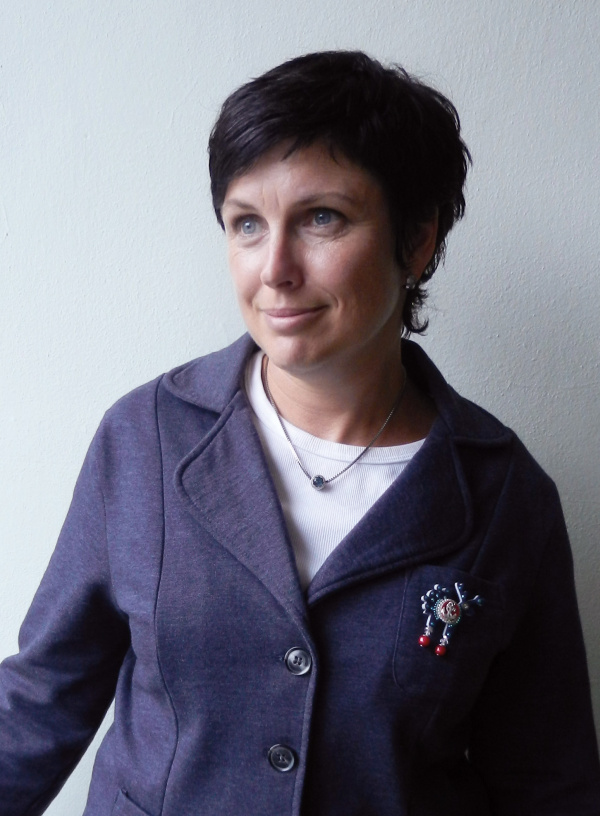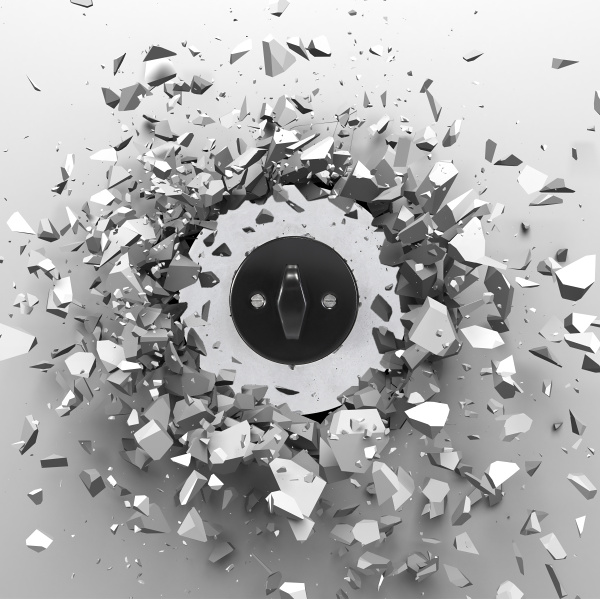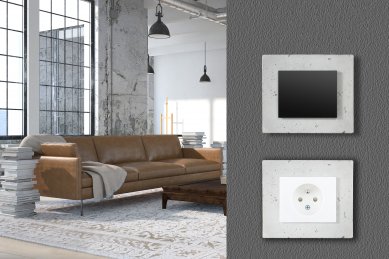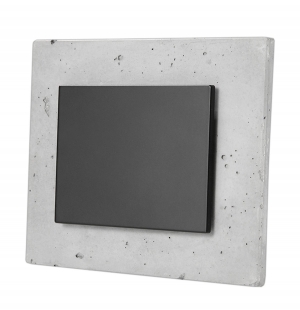
Original concrete frames for switches
Concrete is currently fully penetrating modern interiors, and switches and sockets are no exception, with an original face imbued with industrial charm by the Zlín manufacturer OBZOR. We discussed the challenging journey to concrete frames for residential electrical installations with Lenka Vodicová, marketing manager of the Zlín manufacturer OBZOR.
Concrete is known for its distinctive porous structure. What advantages does a concrete frame for residential electrical installations offer?
First and foremost, I would definitely mention the presence of polymer fibers in the production mixture, which ensure its overall strength. The stability of the concrete is also reflected in the thickness of the frames themselves. In the DECENTE series, this is a thickness of 7 mm, while in the RETRO collection it is a more substantial 13.5 mm. The material is waterproof and UV stable, ensuring virtually unchanged appearance over time. The characteristic pores of concrete are, of course, acknowledged on the surface of the frame, making it an original decorative solution with an industrial touch.
Preparing the right concrete mixture suitable for interiors must not have been easy. How did you manage it in Zlín?
The journey was indeed complicated. Concrete itself is a very individual material, and processing it into a stable form for such a small area as a residential switch frame was not simple at all. It took a long time just to mix the exact ratio of ingredients for the concrete mixture that met the requirements. It had to be created in such a way that the proportions of the concrete frames did not change by more than 0.3 mm after modeling and subsequent sufficient drying of the internal dimensions. For these reasons, many prototypes had to be created over more than two years before achieving the final appearance and form of this progressive material.
Where does the inspiration for producing concrete frames come from?
The initial impulse came from Ing. arch. Tomáš Velinský, who has a multitude of concrete accessories in his portfolio. OBZOR then took this initiative into its own hands and developed it into the current form of concrete frames in the angular lines of the DECENTE series and the round proportions of the RETRO collection. By producing these frames for electrical installations, OBZOR responded to the demands of many architects and designers for more material-attractive and individualized accessories for interiors.
Can we see your switches and sockets with a concrete frame at the upcoming construction and design fairs?
Yes, we will participate in this year's FOR ARCH construction fair, which will take place from September 17 to 21. Our presentation at the fair will focus mainly on unconventional materials for residential switches and sockets. Times have changed, and instead of plastic frames for residential electrical installations, more noble materials are coming, one of which is concrete, which we will present in the RETRO and DECENTE series. And specifically on the occasion of the autumn design and housing fairs, we have decided to offer residential electrical installations with a concrete frame at a 20% discount until the end of October.


However, the production of OBZOR is not just about residential electrical installations in a distinctive design. What is your production history?
The beginnings of OBZOR are somewhat curious. When our production cooperative was established in 1965, it started with peeling onions for large factory canteens. Over the years, the scope of work varied, but the introduction of our own production of cam switches in the early 1970s is considered an important milestone in our history. Other decades saw the production of medical supplies and parts for the automotive industry. In the new millennium, OBZOR started the production of residential switches and sockets, which today offers four product lines with its own design under the names ELEGANT, VARIANT, DECENTE, and RETRO.
OBZOR was founded on the principles of involving people with disabilities in production; does the cooperative still adhere to this mission?
Yes, that is still the case today. The cooperative was founded by the Union of the Disabled, which is where its mission came from - to provide job opportunities for citizens with reduced work capacity. We support this vision even today. Currently, the cooperative employs around 260 workers, over 60% of whom are people with reduced work capacity, whose manual work is highly valued.
www.domovnivypinace.cz
www.obzor.cz
 |
| Lenka Vodicová |
First and foremost, I would definitely mention the presence of polymer fibers in the production mixture, which ensure its overall strength. The stability of the concrete is also reflected in the thickness of the frames themselves. In the DECENTE series, this is a thickness of 7 mm, while in the RETRO collection it is a more substantial 13.5 mm. The material is waterproof and UV stable, ensuring virtually unchanged appearance over time. The characteristic pores of concrete are, of course, acknowledged on the surface of the frame, making it an original decorative solution with an industrial touch.
Preparing the right concrete mixture suitable for interiors must not have been easy. How did you manage it in Zlín?
The journey was indeed complicated. Concrete itself is a very individual material, and processing it into a stable form for such a small area as a residential switch frame was not simple at all. It took a long time just to mix the exact ratio of ingredients for the concrete mixture that met the requirements. It had to be created in such a way that the proportions of the concrete frames did not change by more than 0.3 mm after modeling and subsequent sufficient drying of the internal dimensions. For these reasons, many prototypes had to be created over more than two years before achieving the final appearance and form of this progressive material.
 |
The initial impulse came from Ing. arch. Tomáš Velinský, who has a multitude of concrete accessories in his portfolio. OBZOR then took this initiative into its own hands and developed it into the current form of concrete frames in the angular lines of the DECENTE series and the round proportions of the RETRO collection. By producing these frames for electrical installations, OBZOR responded to the demands of many architects and designers for more material-attractive and individualized accessories for interiors.
Can we see your switches and sockets with a concrete frame at the upcoming construction and design fairs?
Yes, we will participate in this year's FOR ARCH construction fair, which will take place from September 17 to 21. Our presentation at the fair will focus mainly on unconventional materials for residential switches and sockets. Times have changed, and instead of plastic frames for residential electrical installations, more noble materials are coming, one of which is concrete, which we will present in the RETRO and DECENTE series. And specifically on the occasion of the autumn design and housing fairs, we have decided to offer residential electrical installations with a concrete frame at a 20% discount until the end of October.


However, the production of OBZOR is not just about residential electrical installations in a distinctive design. What is your production history?
The beginnings of OBZOR are somewhat curious. When our production cooperative was established in 1965, it started with peeling onions for large factory canteens. Over the years, the scope of work varied, but the introduction of our own production of cam switches in the early 1970s is considered an important milestone in our history. Other decades saw the production of medical supplies and parts for the automotive industry. In the new millennium, OBZOR started the production of residential switches and sockets, which today offers four product lines with its own design under the names ELEGANT, VARIANT, DECENTE, and RETRO.
OBZOR was founded on the principles of involving people with disabilities in production; does the cooperative still adhere to this mission?
Yes, that is still the case today. The cooperative was founded by the Union of the Disabled, which is where its mission came from - to provide job opportunities for citizens with reduced work capacity. We support this vision even today. Currently, the cooperative employs around 260 workers, over 60% of whom are people with reduced work capacity, whose manual work is highly valued.
www.domovnivypinace.cz
www.obzor.cz
The English translation is powered by AI tool. Switch to Czech to view the original text source.


0 comments
add comment











